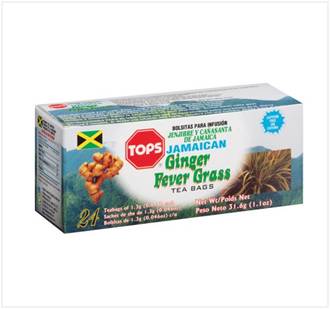Description
Organic Jamaican Cerasee bush 50g (Bitter Melon)-(Momordica Charantia) Herb.
Cerasee Benefits and Uses
Cerasee is used in many cultures as an herbal treatment to a couple of medical conditions and predominantly the plant has also been studied for its healing benefits. Here are some of the known uses for Cerasee:
Weight Loss: Cerasee has another potential application in weight loss, according to a published study in 2010. According to the study’s outcome, Cerasee was effective in reducing and suppressing lipid (fat) accumulation in the body by successfully regulating adipogenic transcription factors and adipocytokine gene expression. However, the study suggested that more studies need to be conducted for Cerasee’s formal use for human weight loss.
Diabetes: Possibly one of the most significant uses of Cerasee involves its application in diabetes treatment. Due to Cerasee’s hypoglycemic activity, studies all over the world were conducted for the plant for its use in diabetics, leading to the development of natural supplements containing Momordica/Cerasee for ailing patients. According to one 2013 review, there are abundant pre-clinical studies published supporting Cerasee’s hypoglycemic effects benefiting patients with diabetes. However, the same study also outlined the need for better-designed clinical trials to further establish Cerasee’s importance when it comes to diabetes treatment.
Convinced that Cerasee is for you?
Here’s the Best Cerasee on the Market Today.
Acne: Due to Cerasee’s antibacterial properties, the plant is also involved in managing acne, especially cystic acne caused by bacterial pathogens. A Taiwanese study in 2015 studied the relevance of Cerasee (Momordica’s) bacterial-fighting ability against Proppionibacterium acnes (P.acnes), which is the primary bacterium responsible for causing treatment-resistant acne. According to the result of the study, Momordica extract effectively inhibited P.acne activity and concluded that the plant extract may be useful for managing inflammation caused by the bacterium.
Pregnancy and Abortion: Cerasee’s bitter taste led to the use of the plant as an abortifacient in several cultures. According to one review, due to the plant’s abortifacient properties, several cultures advise women to avoid consuming it. Apart from abortion, Cerasee’s seeds are also known to have antispermatogenic properties in males.
Skin: Ground Cerasee stems and leaves are usually applied to the skin for its healing properties, hence its use in many skin diseases. Other traditional uses for this plant also suggest Cerasee tea’s blood purifying capabilities, which lead to clearer, rejuvenated skin. While other traditions prevent pregnant women to consume the plant because of its abortifacient properties, some cultures encourage its consumption for the infant’s clearer skin.
Cancer: Research studies strongly back-up claims for Cerasee as a use for cancer treatment. Some studies suggest that the Cerasee extract is able to control breast cancer by inhibiting cancer cell growth and encouraging cancer cell apoptosis (cell death). For that reason, Cerasee extract may be used as a supplement for breast cancer treatment or prevention. Apart from breast cancer, Cerasee is also being studied for its efficacy in other cancer types including prostate cancer, melanoma, choriocarcinoma, human bladder carcinomas, Hodgkin’s disease, and skin tumors.
Stimulant: Besides being a potential cancer treatment, Cerasee is also considered as an appetite stimulant. The detailed use for Cerasee as an appetite stimulant is not outlined, but the plant has a long history in Chinese medicine and also in traditional medicine as treatment for stomach infections.
Antioxidant: Research suggests the use of Cerasee as an antioxidant given its leaf, stem, and fruit extracts high potential for free radical scavenging activity. According to one 2008 study, the leaves showed the highest antioxidant activity based on its ferric reducing power and DPPH radical-scavenging activity; on the other hand, the Cerasee fruit extract exhibited the highest antioxidant activity in terms of hydroxyl radical-scavenging activity, beta-carotene-linoleate bleaching assay activity, and total antioxidant capacity.
Another study from 2008 also concluded that Momordica or the Cerasee plant’s antioxidant activity contributes to its therapeutic benefits in traditional medicine.
Detox (Cleanse): Due to the antioxidant activity of Cerasee (Momordica), the plant is traditionally used for detoxification. The researchers studied the effects of cadmium in the liver, but also found out that Cerasee’s methanolic leaf extract has great potential when it came to liver damage prevention. Cerasee’s antioxidant activity and its detoxifying property were able to limit cadmium’s supposed liver damage properties.
Clean Urine (To Pass Drug Tests): Cerasee tea is also believed to help in cleansing urine to pass drug tests because of it’s blood purifying and detoxifying properties. However, there is still not enough proof that will suggest Cerasee’s overall effectiveness in detoxifying urine for various types of drug tests.
Chikungunya: Cerasee is also thought to assist in fighting off infections and viruses like the Chikungunya. According to common Jamaican culture, Cerasee helps purge the blood, hence increasing the body’s capacity to fight off viruses and other foreign pathogens, including the Chikungunya virus.
Eczema: Cerasee leaves and stems are ground to paste and are used to alleviate skin conditions like eczema in patients. Historical evidence in traditional medicine suggests the use of Cerasee in treating several ailments including skin diseases like eczema, according to a 2004 study. Although more evidence is still needed to establish Cerasee (Momordica) for skin treatments, early studies for the plant have had promising results.
Herpes: Cerasee is also used in treating other viral infections such as herpes. Studies reveal that its extract is also able to effectively fight off viruses like the herpes simplex virus, the one responsible for most genital herpes. It is also said that Cerasee extract is more effective than the renowned antiviral drug Acyclovir in killing off herpes simplex strains resistant to the antiviral drug.
Flu: Another traditional use of the Cerasee (Momordica) is for flu treatment. Various cultures believe that bitter fruits like Cerasee have strong healing properties, hence its use for flu treatment in individuals. The plant may have been effective in managing flu symptoms given its strong antioxidant, antibacterial, and antiviral properties, as supported by countless research studies about the plant.
Cold: Given Cerasee’s antiviral properties, Cerasee tea and Cerasee fruit is also believed to help relieve colds in patients and assist in faster recovery of individuals with colds and flu. Research, on the other hand, attests to Cerasee’s benefits in fighting off viral infections, hence its possible application in quicker cold recovery.
Hair Growth: Some suggest the use of Cerasee in hair loss – according to traditional treatments, Momordica juice should be mixed with a dash of sugar as a paste for the scalp. This will help to naturally reduce hair loss.
Yeast Infection: Bacteria is responsible for yeast infections and since Cerasee’s extract is known for its antibacterial properties, the plant is also studied for its applications in treating yeast infections. According to one study published in 2010, Cerasee (Momordica) extract had promising results when it came to managing yeast-induced pyrexia in rats. Researchers recommended the further study of Cerasee extract for yeast infection, pyrexia, and analgesia.
Liver: Cerasee fruit, tea, and extract are believed to have detoxifying properties relevant to liver maintenance. Studies strongly support the potential of Momordica for liver maintenance, as it was able to prevent liver damage as seen in several studies. As a result, liver supplements with Momordica are available in the market and are aimed at helping prevent liver damage and disease.
Cerasee Dosage
Since Cerasee is not yet a drug, there is no fixed recommendation for its dosing in patient use. However, suggested use for diabetics is 50 to 100 mg of Cerasee juice daily or 900 mg of Cerasee fruit 3 times a day. Traditional medicine suggests that Cerasee tea intake should also be limited to one or two cups a day. Also, according to traditional Jamaican use, Cerasee use should be given a 9-day break to prevent possible liver damage.
Cerasee Side Effects, Safety, Dangers and Warnings
Although the Cerasee plant is highly recommended as a whole, warnings also exist for this plant’s use, especially for pregnant women. Since Cerasee is used as an abortifacient, pregnant or lactating women should avoid consuming Cerasee fruit or tea. Individuals are also warned about this plant’s possible antifertility actions in individuals, especially men.
Apart from abortifacient and antifertility effects, the plant is also associated with cases of hypoglycemic comas in children taking Cerasee tea, atrial fibrillation, abdominal pain, diarrhea, vomiting, and headache.
For safety purposes, it is always wise to consult with the doctors first before using Cerasee for medical conditions and before taking Momordica-based supplements, especially when patients who will use the plant are currently with other prescription medications.
How to make Cerasee Tea?
Since Cerasee tea is rich in Vitamin A, C, phosphorous, and alkaloids, and hosts a multitude of benefits for the body, Cerasee fruit consumption or leaves/bush brewing is prevalent in most cultures. To make Cerasee tea, you will need 10 cups of water, a handful of dried or green Cerasee, and a teaspoon of sugar. After washing the dried or fresh Cerasee, it is placed in a pot with the water and subjected to high heat until the water becomes only a cupful. When the Cerasee tea is reduced, the tea is strained and sweetened to taste. Alternatively, pre-made Cerasee tea bags can be purchased online or locally depending on their availability.
Best Cerasee to Buy
Its best to buy an authentic Cerasee tea made with traditional preparations. I myself prefer a Jamaican Cerasee. Generally anything with “Jamaican Cerasee” is going to be prepared correctly.
My favorite Cerasee would be Shavuot.
References:
https://www.ncbi.nlm.nih.gov/pmc/articles/PMC3255405/
http://file.scirp.org/pdf/ABC_2014061710494412.pdf






Reviews
There are no reviews yet.